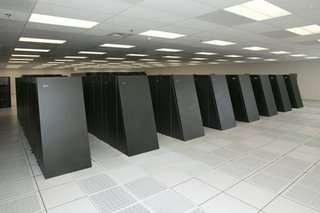Intel Launches Core2 Duo
 Intel officially announced the introduction of 10 Core 2 Duo and Core Extreme microprocessors for desktops, workstations and notebooks. Intel said it has over 550 customer system designs underway, with the CPUs built on 65 nanometre technology. Machines using the desktop chips will be available in early August, while notebooks will become available at the end of that month.
Intel officially announced the introduction of 10 Core 2 Duo and Core Extreme microprocessors for desktops, workstations and notebooks. Intel said it has over 550 customer system designs underway, with the CPUs built on 65 nanometre technology. Machines using the desktop chips will be available in early August, while notebooks will become available at the end of that month.Five of the family are aimed for desktops, five for notebook and mobile users. The products were formally codenamed "Cointreau" and "Merom". The chips support 64-32 instructions, so called smart cache which shares L2 cache, wide dynamic execution, and instructions that speed up multimedia transactions. The mobile chips have a better version of Speedstep, a method for powering down the processor to increase battery life, and other power saving devices.
Conroe chip is about 40% faster than the Pentium D while consuming 40% less power. The Merom chips are about 20% faster than the older Core Duo laptop chips at the same power level. The "Cointreau" chips clock from 2.93GHz down to 1.86GHz, all using a 1066MHz system bus, and with L2 caches of 4MB for the higher clocked chips and 2MB for the lower clocked chips. The "Merom" chips clock from 2.33GHz down to 1.66GHz with bus speeds of 667MHz and cache of either 4MB or 2MB for the two lowest SKUs (stock keeping units).
Intel has established the price for the desktop processors from about $180 to $1000 for 1,000-unit quantities. However, the price for the notebook processors remains to be specified at the end of August.




